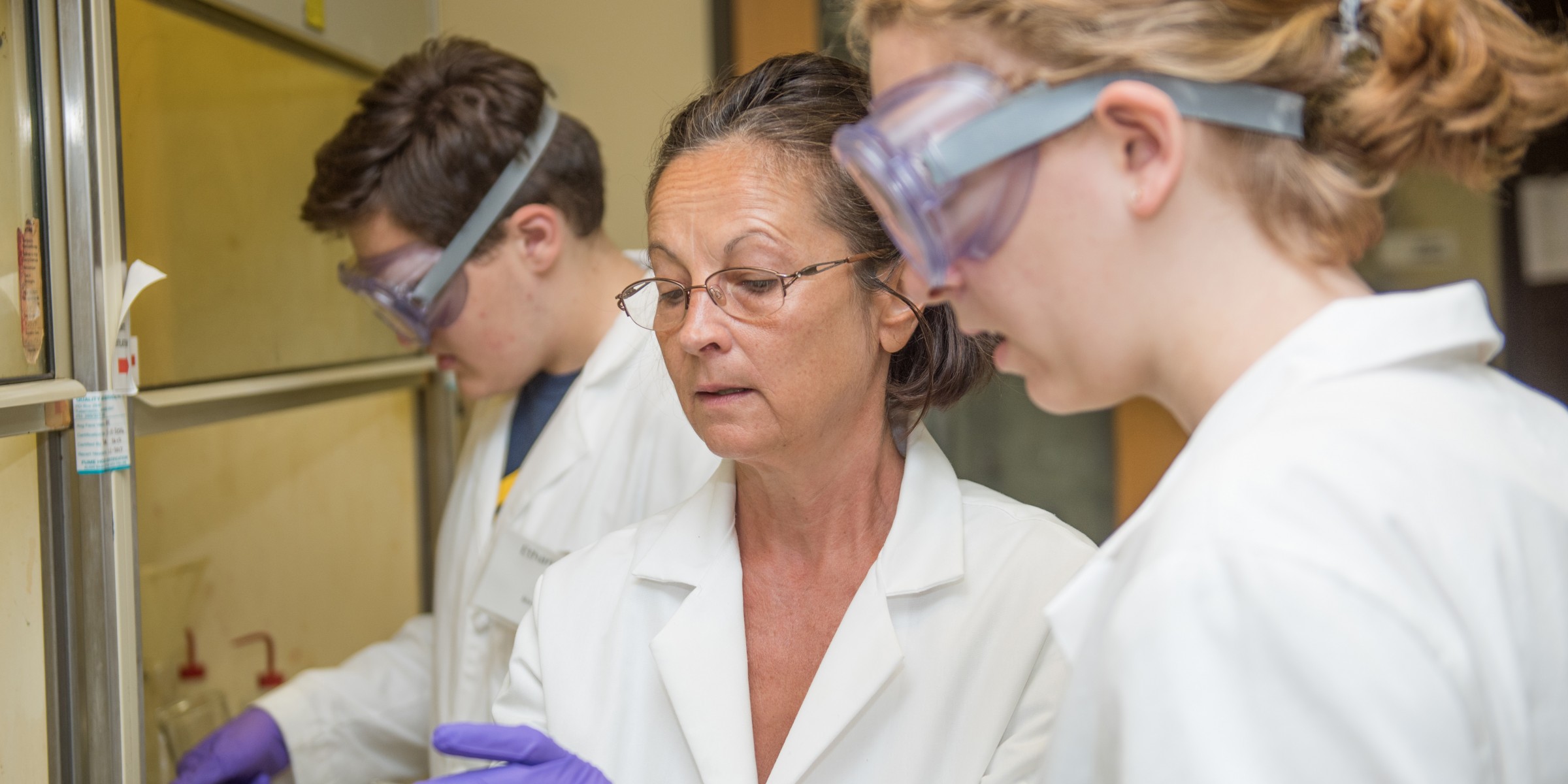Developing New Chemistries and Materials for Redox Flow Batteries

Team: Ethan Bruce, Midland High School; Jessica Kline, HH Dow High School; Dacia Munteanu, MSU (not pictured)
Mentor: Adina Dumitrascu, PhD
Finding the energy to power human civilization without ruining the environment is the greatest challenge humanity faces this century. Redox flow batteries (RFB) represent one class of electrochemical energy storage devices. The name “redox” refers to the chemical reduction and oxidation reactions employed in RFBs to store energy in liquid electrolyte solutions which then flow through a battery of electrochemical cells during charge and discharge. RBFs could one day usher in widespread use of renewable energy, but only if the devices can store large amounts of energy cheaply and independent of weather-based power sources. RFBs are attractive for grid storage applications because they are relatively inexpensive and highly scalable.
For a given chemistry, the power output of the RFB is largely defined by the flow cell characteristics, while the energy storage capability depends primarily on the size of the storage tanks. Thus, increasing the energy storage capacity of an RFB is as simple as building bigger tanks. Unfortunately, there are several challenges to the widespread adoption of RFBs in grid storage applications. The biggest hurdles are associated with the need for an ion-selective membrane, which often represents the most expensive RFB component. In addition to high costs, the efficiency of commercial membrane materials is less than ideal, leading to a slow cross-contamination of the anolyte and catholyte solutions. Finally, the membranes tend to be fragile and subject to a gradual decline in performance, and thus regular maintenance and/or replacement is required. Recently the organic-based energy storage systems started to show immense opportunities and promise in overcoming the limitations of RFBs. Our current research, in which STEM students are involved, is aimed at developing new chemistries and materials for redox flow batteries, which could be used for massive electrical energy storage.



